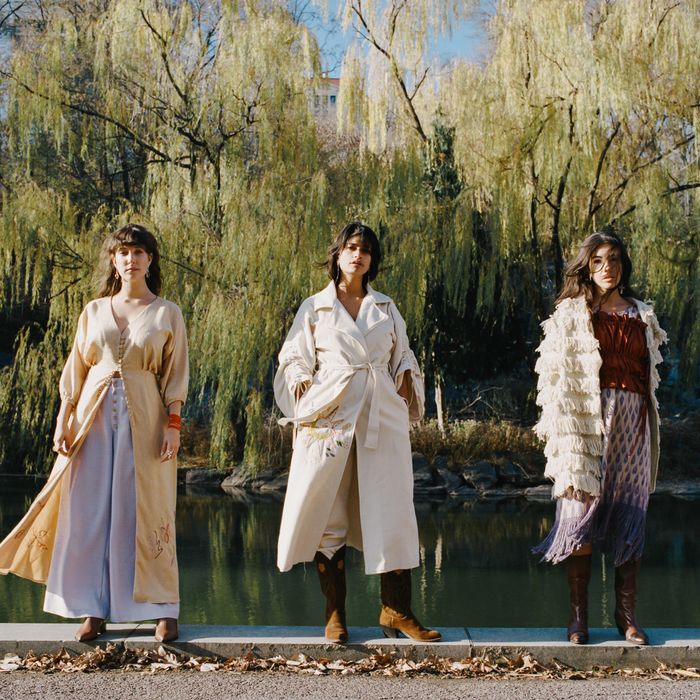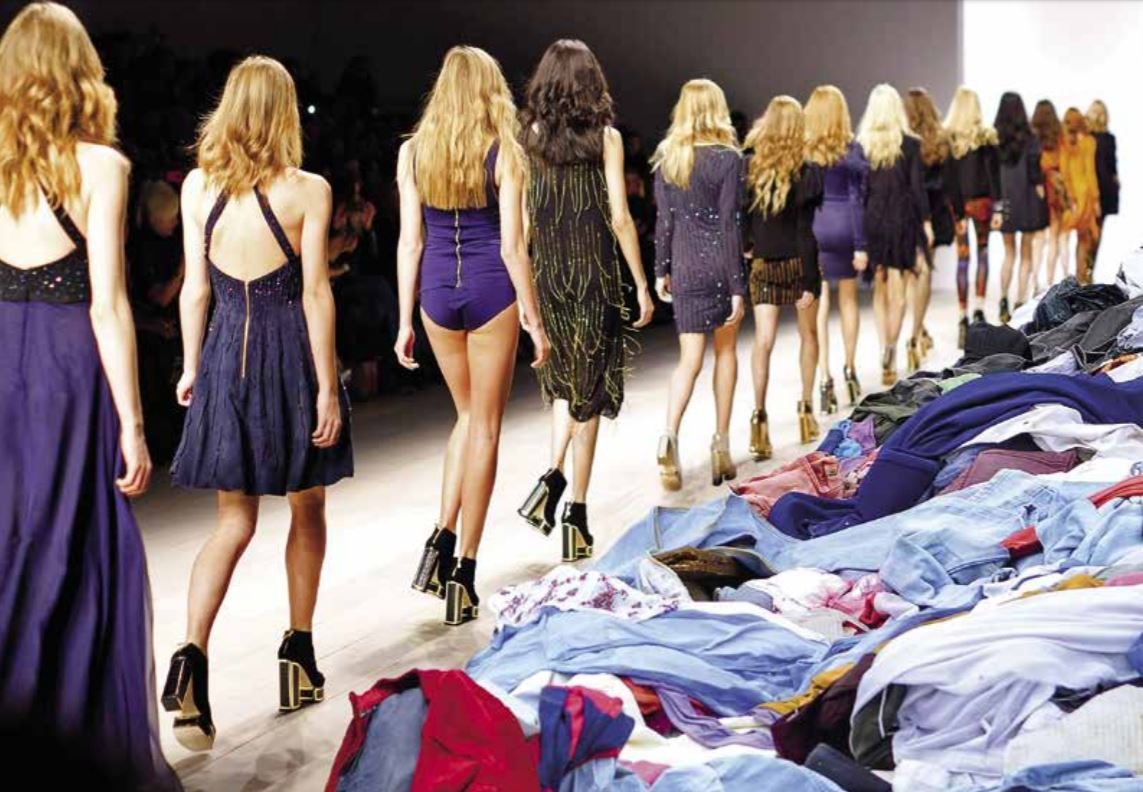The opposite of fast fashion is slow fashion. Slow fashion emphasizes sustainability, quality, and ethical production.
Slow fashion promotes a more mindful approach to clothing. It focuses on creating garments that last longer and are made from eco-friendly materials. Brands that embrace slow fashion prioritize fair labor practices and transparent supply chains. This movement encourages consumers to buy less but choose better-quality items.
Slow fashion also supports local artisans and small businesses. It aims to reduce the environmental impact of clothing production. By choosing slow fashion, individuals can make a positive difference in the fashion industry. This approach ultimately leads to a more sustainable and ethical future for fashion.
Introduction To Slow Style
The fashion world is changing. People are shifting from fast fashion to a more sustainable choice: slow style. Slow style emphasizes quality over quantity. It aims to reduce waste and promote ethical practices.
Concept Of Slow Fashion
Slow fashion is about making clothes with care. It focuses on the environment and fair treatment of workers. Brands produce fewer items, but they are made to last. This concept values timeless design over fleeting trends.
- Quality materials
- Ethical labor practices
- Timeless designs
Slow fashion encourages buying less but choosing better. It promotes thoughtful consumption. This means you buy clothes you truly love and will wear often.
Importance In Modern Society
Slow fashion is crucial today. Fast fashion harms the planet and exploits workers. Slow fashion offers a solution.
| Fast Fashion | Slow Fashion |
|---|---|
| Mass production | Small-scale production |
| Low quality | High quality |
| Short lifespan | Long lifespan |
In modern society, slow fashion supports sustainability. It reduces waste and pollution. It also ensures fair wages and safe working conditions. Consumers are becoming more aware of these issues. They want to make better choices.
- Buy less, choose well
- Support ethical brands
- Care for your clothes
By adopting slow fashion, people can make a positive impact. They can help create a better future for our planet and its people.
Principles Of Slow Fashion
Slow fashion is the opposite of fast fashion. It focuses on sustainability and ethical practices. Slow fashion prioritizes quality, ethical production, and sustainable materials.
Quality Over Quantity
Slow fashion values quality over quantity. It encourages buying fewer items but of higher quality. These items last longer and reduce waste.
Quality garments are crafted with care. They use durable materials and superior craftsmanship. Investing in quality pieces saves money in the long run.
Ethical Production
Ethical production is a key principle of slow fashion. It ensures fair wages and safe working conditions. Ethical production respects workers and their rights.
Brands practicing ethical production are transparent. They share information about their factories and labor practices. This builds trust with consumers.
Sustainable Materials
Slow fashion uses sustainable materials. These materials have a lower environmental impact. Examples include organic cotton, bamboo, and recycled fabrics.
Sustainable materials are renewable and biodegradable. They reduce pollution and conserve resources. Choosing sustainable materials supports a healthier planet.
Environmental Benefits
The opposite of fast fashion, often called slow fashion, has many environmental benefits. Slow fashion focuses on sustainability and reducing environmental impact. Let’s explore the key benefits in detail.
Reducing Waste
Slow fashion reduces waste by encouraging durable, long-lasting clothes. Fast fashion, on the other hand, produces a lot of waste. Clothes are often worn only a few times and then discarded. This leads to overflowing landfills. Slow fashion promotes using clothes for a longer time. This reduces the amount of waste significantly.
| Aspect | Fast Fashion | Slow Fashion |
|---|---|---|
| Waste Generation | High | Low |
| Clothing Lifespan | Short | Long |
Lower Carbon Footprint
Slow fashion has a lower carbon footprint. Fast fashion involves rapid production. This often requires more energy and resources. Factories emit a lot of greenhouse gases. Slow fashion uses eco-friendly methods and materials. This reduces the carbon footprint of the clothing industry.
- Eco-friendly materials: Organic cotton, recycled fabrics
- Energy-saving methods: Handcrafting, low-energy machinery
By choosing slow fashion, we help the environment. We can reduce our carbon footprint and waste. This makes a significant positive impact on the planet.

Social Impact
The opposite of fast fashion, also known as slow fashion, focuses on the social impact of clothing production. Slow fashion promotes ethical practices and supports local communities. It ensures fair wages, safe working conditions, and sustainable development.
Fair Labor Practices
Slow fashion brands prioritize fair labor practices. They ensure workers get fair wages and safe environments. This ethical approach values human life over profit. Workers receive fair treatment and respect.
- Fair wages
- Safe working conditions
- Respect for workers
Community Support
Slow fashion supports local communities by sourcing materials locally. This approach boosts local economies and reduces carbon footprints. It encourages sustainable practices and strengthens community ties.
| Benefit | Description |
|---|---|
| Local Sourcing | Boosts local economies and reduces carbon footprints |
| Strengthened Ties | Promotes sustainable practices and community bonds |
By choosing slow fashion, consumers support ethical practices and community growth. This approach ensures a positive social impact and promotes sustainability.
Economic Advantages
The economic advantages of slow fashion are substantial. This approach promotes long-term financial benefits and supports local economies. Understanding these advantages can help consumers make better choices.
Long-term Savings
Slow fashion focuses on quality over quantity. Consumers buy fewer items, but they last longer. This leads to significant long-term savings.
Consider a table comparing fast fashion and slow fashion costs:
| Aspect | Fast Fashion | Slow Fashion |
|---|---|---|
| Average Cost per Item | $20 | $60 |
| Lifespan of Item | 6 months | 3 years |
| Total Cost Over 3 Years | $120 (6 items) | $60 (1 item) |
As shown, slow fashion can lead to lower costs over time. This makes it a smarter financial choice.
Support For Local Businesses
Slow fashion often involves local artisans and small businesses. Supporting them boosts the local economy. This creates jobs and keeps money within the community.
Benefits of supporting local businesses include:
- Job creation in your community
- Higher-quality products
- Unique, handmade items
Choosing slow fashion means your money goes to local creators. This strengthens your local economy.
In essence, slow fashion provides both long-term savings and supports local businesses. It benefits your wallet and your community.

How To Adopt Slow Fashion
Slow fashion is the opposite of fast fashion. It promotes mindful consumption. Slow fashion involves buying high-quality, long-lasting clothes. This section will guide you on how to adopt slow fashion.
Mindful Shopping
Mindful shopping is the first step to adopting slow fashion. This means being conscious of your purchases. Look for clothes made of sustainable materials. Check the labels for organic cotton, linen, or recycled fabrics. Choose brands that follow ethical practices. Support local artisans and small businesses. This helps reduce your carbon footprint. Buy only what you truly need.
Clothing Care Tips
Caring for your clothes extends their lifespan. Follow the washing instructions on the label. Use cold water to save energy. Avoid using a dryer; air-dry your clothes instead. This reduces wear and tear. Store clothes properly to maintain their shape. Use wooden hangers for jackets and blazers. Fold knitwear and store it flat. Repair small damages like loose buttons or minor tears. This keeps your clothes wearable for longer.
Upcycling Ideas
Upcycling gives new life to old clothes. It’s a creative way to reduce waste. Here are some easy upcycling ideas:
- Turn old jeans into shorts.
- Transform a T-shirt into a tote bag.
- Add patches to cover stains or holes.
- Use fabric paint to create unique designs.
Upcycling saves money and reduces waste. It encourages creativity and personal style. Share your upcycled creations to inspire others.
Brands Leading The Way
The opposite of fast fashion is slow fashion. It emphasizes sustainability, ethics, and quality. Many brands are leading the way in slow fashion, setting an example for others.
Notable Slow Fashion Brands
Several brands have taken significant steps towards slow fashion.
| Brand | Key Practices |
|---|---|
| Patagonia | Uses recycled materials, fair trade, and repair services. |
| Everlane | Transparent pricing, ethical factories, and high-quality materials. |
| Reformation | Sustainable fabrics, eco-friendly processes, and fair labor. |
Case Studies Of Success
These brands have successfully implemented slow fashion principles.
- Material Use: 68% recycled materials in 2020.
- Repair Service: Worn Wear program extends garment life.
- Fair Trade: Fair Trade Certified™ sewing practices.
- Transparency: Detailed cost breakdown for each product.
- Ethical Factories: Regular audits ensure fair practices.
- Quality: Focus on timeless designs and durability.
- Sustainable Fabrics: Uses Tencel, recycled cotton, and deadstock fabric.
- Eco-Friendly Processes: Tracks environmental impact of each item.
- Fair Labor: Ensures fair wages and safe working conditions.
Challenges And Solutions
Fast fashion dominates the market, but its negative impact is significant. Adopting slow fashion can be challenging, yet solutions exist. This section explores overcoming fast fashion temptations and making slow fashion accessible.
Overcoming Fast Fashion Temptations
Temptations of fast fashion are everywhere. The prices are low, and trends change quickly. You can overcome these temptations with some smart strategies:
- Prioritize Quality: Choose well-made clothes that last longer.
- Create a Capsule Wardrobe: Select a few versatile pieces.
- Plan Purchases: Avoid impulse buys by making a shopping list.
- Value Sustainability: Research brands focusing on ethical production.
Making Slow Fashion Accessible
Slow fashion can seem expensive and hard to find. But with the right approaches, it becomes more accessible:
| Challenge | Solution |
|---|---|
| High Costs | Look for sales or buy second-hand items. |
| Limited Availability | Support local artisans and small businesses. |
| Lack of Awareness | Educate yourself about sustainable fashion practices. |
| Style Preferences | Find slow fashion brands that match your style. |
By addressing these challenges, embracing slow fashion becomes easier. It’s about making conscious choices that benefit you and the planet.
The Future Of Slow Fashion
The fast fashion industry has dominated the market for years. Yet, a shift is happening. The future of slow fashion is bright. Slow fashion values quality over quantity. It focuses on sustainability and ethical practices. Let’s explore what lies ahead for slow fashion.
Innovations In Sustainable Fashion
Slow fashion brands are embracing new technologies. These innovations reduce environmental impact.
- Recycled Materials: Brands use recycled fabrics to create new clothes.
- 3D Printing: This technology allows for zero-waste production.
- Natural Dyes: Dyes from plants and minerals reduce chemical waste.
- Biodegradable Fabrics: These fabrics break down naturally after use.
These innovations help protect our planet. They also appeal to conscious consumers.
Consumer Trends And Predictions
Consumer behavior is changing. More people are choosing sustainable options. Let’s look at some trends and predictions.
| Trend | Prediction |
|---|---|
| Thrifting and Resale | More people will buy second-hand clothes. |
| Minimalism | Consumers will buy fewer, but higher-quality items. |
| Transparency | Brands will share more about their sourcing and practices. |
| Local Production | Consumers will support locally-made products. |
Consumers are becoming more aware. They want to support ethical and sustainable brands.

Frequently Asked Questions
What Is Slow Fashion?
Slow fashion emphasizes quality over quantity. It focuses on sustainable production and ethical labor practices. Slow fashion encourages thoughtful purchasing and long-lasting garments.
How Does Slow Fashion Benefit The Environment?
Slow fashion reduces waste and pollution. It uses eco-friendly materials and sustainable production methods. This approach lessens the environmental impact of clothing.
Why Is Slow Fashion More Ethical?
Slow fashion ensures fair wages and safe working conditions. It respects workers’ rights and promotes ethical labor practices. This makes it a more humane choice.
How Can I Support Slow Fashion?
You can support slow fashion by buying from ethical brands. Choose quality over quantity and recycle clothing. Educate yourself about sustainable fashion practices.
Conclusion
Embracing the opposite of fast fashion supports sustainability and ethical practices. Choosing quality over quantity helps the planet and its people. Conscious shopping habits can drive positive change in the fashion industry. Make informed choices to contribute to a more sustainable future.
Your wardrobe can reflect values that prioritize both style and responsibility.
